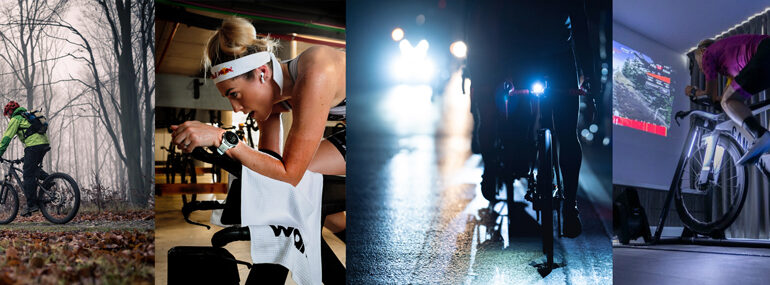Ever woke up on a frosty winter’s morning and decided against the ride or the commute to work, and begrudgingly stepped into your car instead, to then be stuck in traffic 10 minutes into your journey? Yes, we have all been there. The following top 5 tips for commuting or riding in subzero temperatures will hopefully sway the ride or commute in your favor next time you find yourself in that position!

1. Layers
Layers are king when the temperatures plummet below 0 Celsius, adding in wind chill factor elements as-well and you have the perfect recipe for freezing at the roadside if you do not get your layers correct. Solely relying on a base layer and an outer jacket will leave you needing more at some points and wanting less at other points during a ride or a commute. With layering, you give yourself the ability to strip off or undo layers to fit the temperature or the tempo of the ride.
Think along the lines of; 200gsm+ Merino long sleeve base layer, silk glove liners, insulated neoprene overshoes, Primaloft gilet and a fluffy buff to keep the chill at bay!

2. Tyre Pressures
Less is more when it comes to tyre pressures when riding in unpredictably cold and potentially icy conditions,. Providing yourself with the best grip possible is key to riding confidence when the mercury drops. Lowering your pressures on your trusty steed will create a larger contact patch, increasing the surface area and providing more grip in most scenarios on the road. Ideal pressure tends to be dependent on total system weight, so experiment to begin with by dropping your pressures by 10psi and take it from there.
3. Go easy on the Handlebars
Not gripping the handlebars with a tight clasp can sometimes be difficult, especially when it is cold. However, this can be counterproductive when there is risk of surface or black ice. Engaging your core more and taking a lighter grip on the hoods will aid control of the bike. When the surface gets slippy, having a tight clasp on the hoods – especially if you reach to get out of the saddle – could cause the front wheel to lose traction due to instability. Try not to get out of the saddle on too many occasions! Further to this, if you are ever in the need to take one hand off the bars to reach for a gel or bottle, adjusting your hand position to sit on the tops of the bars will give you more control of the bike by shifting your body weight more centrally.
4. Fuel Yourself
An often forgotten and underrated part of riding in these conditions is adequate fueling of your ride or commute. The demands placed on the body when riding in minus temperatures are as great, if not greater, than riding in extreme hot temperatures. In those scenarios, you would naturally want to increase your water/electrolyte intake to counterbalance the salt loss from perspiration. When cold, your basal metabolic rate will increase its output to keep your body warm. In the science world this is called Non shivering thermogenesis. This in turn can increase caloric expenditure, creating a larger workload effect on your ride. It is therefore important to fuel yourself beforehand, and keep glycogen stores topped up during the ride or commute.
My top tip here would be a lovely warm energy drink, such as the Torq Energy Drink in Pink Grapefruit. Make it like you would a cup of tea! Use an insulated bottle then whenever you do take a sip, you are killing two birds with one stone – valuable welcomed heat and taking on board important carbohydrates!

5. Bike Maintenance!
This is an important aspect of riding your bike at the best of times, either on the commute or a weekend social ride. However, any issues you have with your bike is only going to be heightened in extreme temperatures. You do not want to be going round a 90-degree bend with dragging discs or a loose headset with the risk of black ice. Keep your bike regularly maintained and cleaned to mitigate any mechanicals which could cause damage or injury. One key point is to keep a regular check of chain wear, especially if riding consistently in subzero temperatures where grit and salt can chew through the life of a drivetrain at an exceptional rate. The last thing you will need is your chain jumping off the chainrings due to stretch when you are already battling against the elements!
What are you waiting for? Book your bike in for a service at your nearest Cycle Revolution store!






